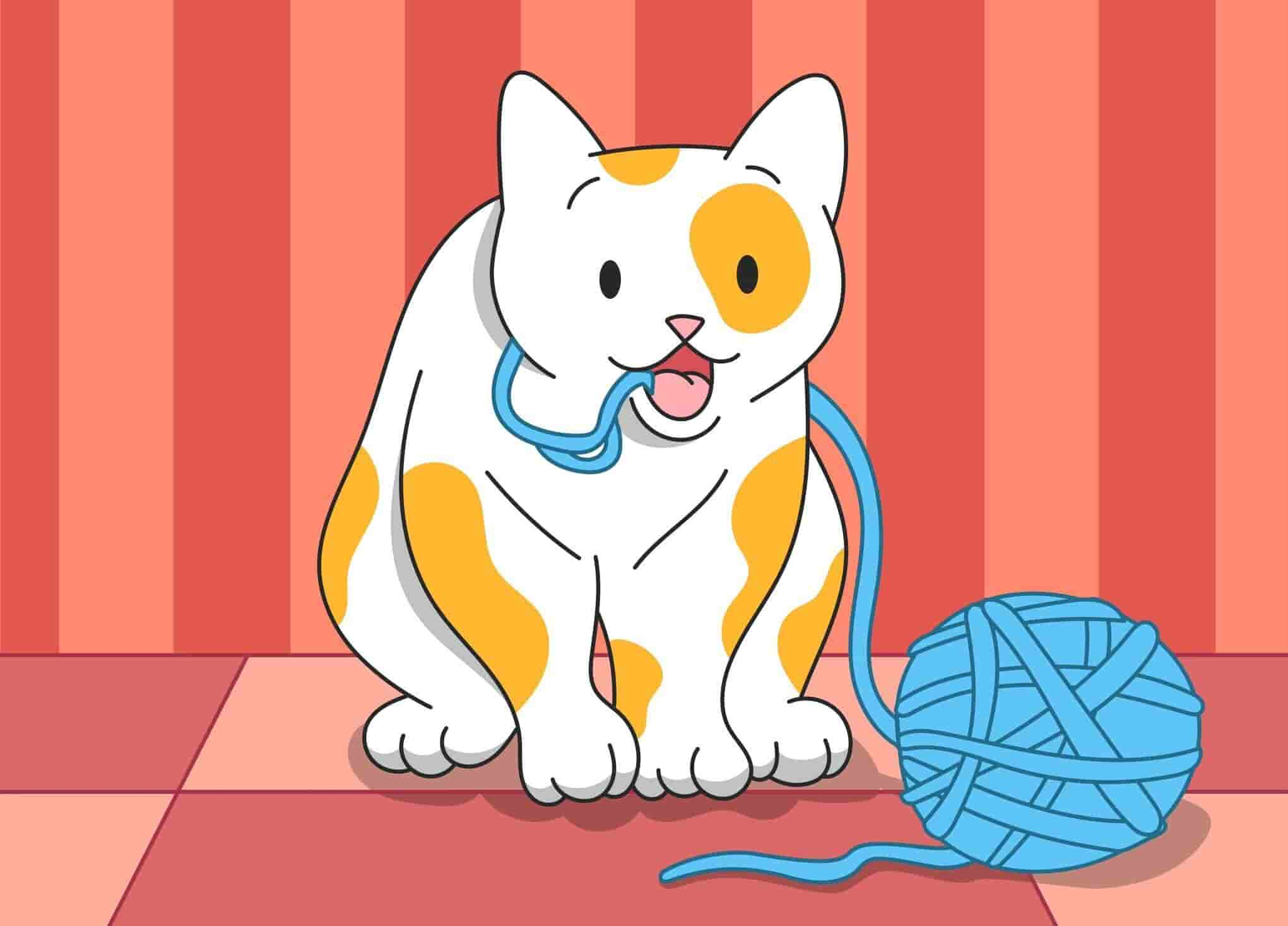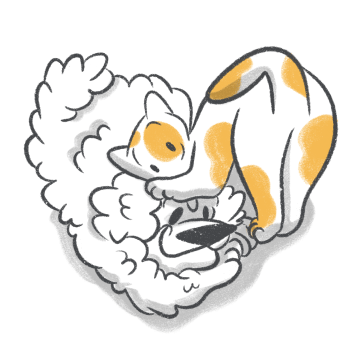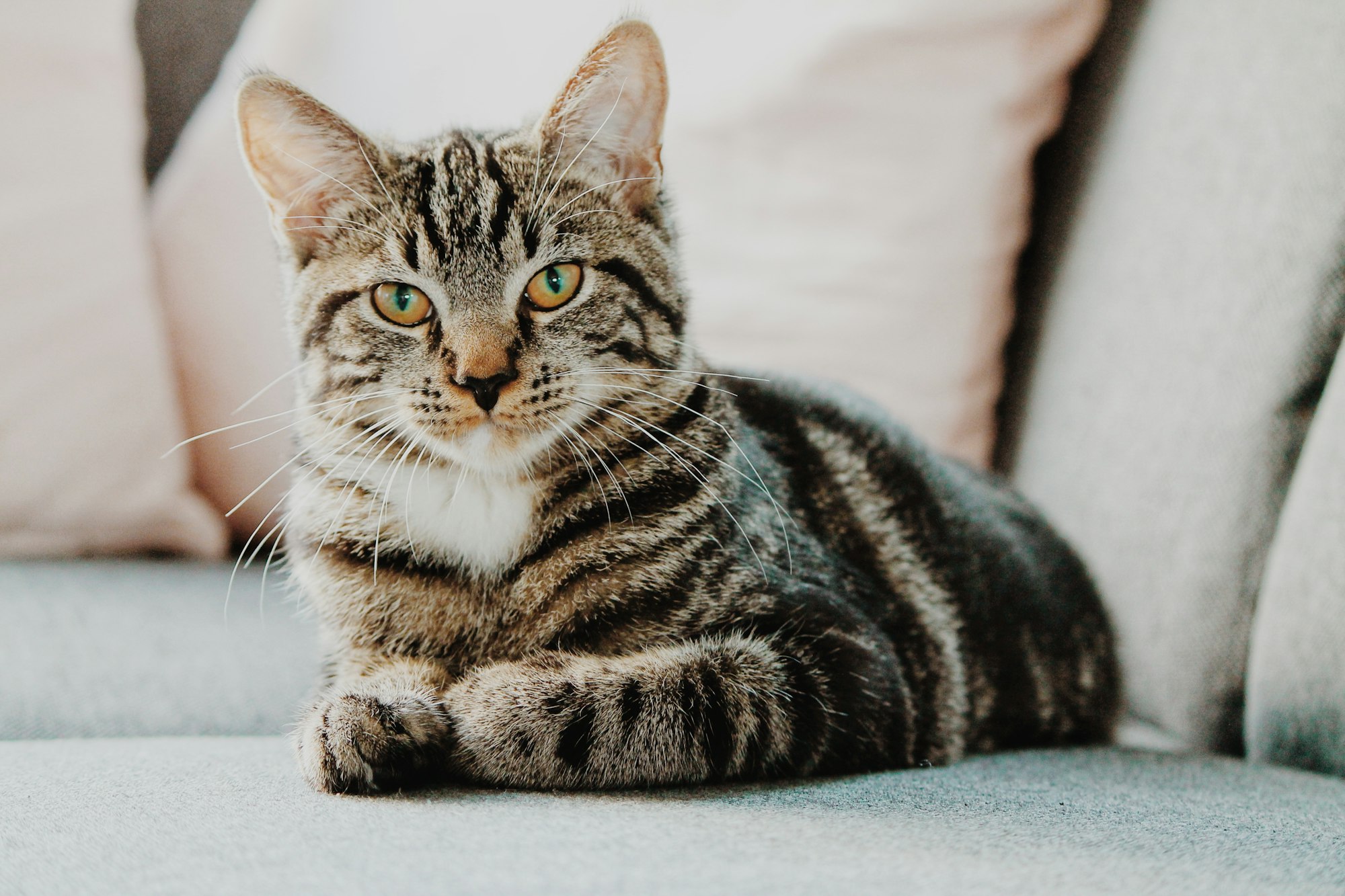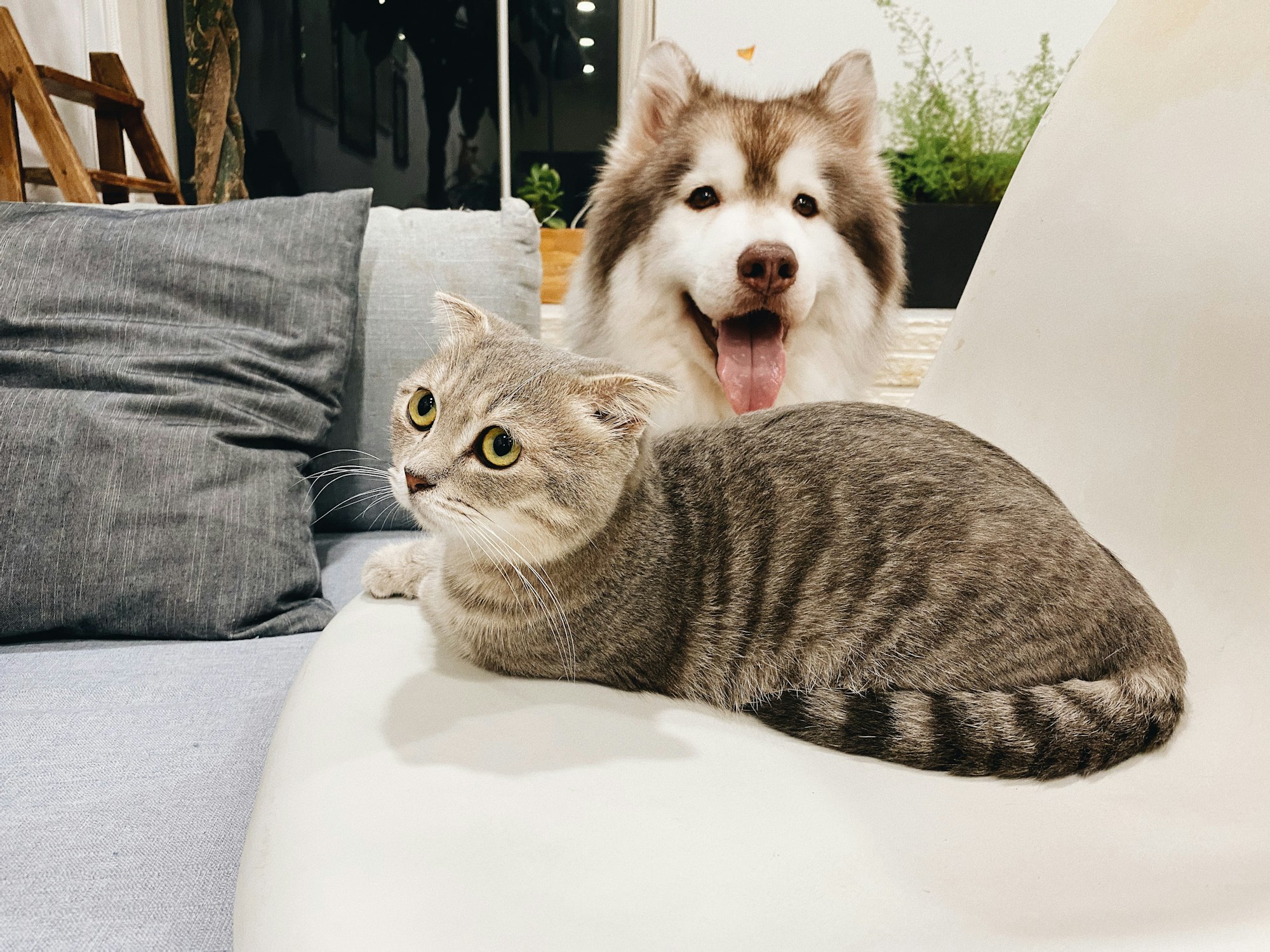Picture a gorgeous, fluffy feline playfully batting and chasing a ball of yarn.
*record scratch*
Wait a second… Is that cat eating the yarn? That can’t be right. Should she be doing that?
If you’ve ever witnessed your cat eating anything that isn’t what you’d assume to be edible, then your cat may have pica.
What is pica in cats?
Pica is an eating disorder characterized by an obsessive urge to eat items that are not typically food. In humans, it’s commonly reported among pregnant women, but cats and dogs can have pica too.
Feline pica is a common condition that presents as a cat that will obsessively eat nonfood items like plastic, paper, cables, plants, grass, and even fabric.
Consuming items that aren’t edible might seem like a harmless eccentricity, but it can lead to some serious health conditions like intestinal obstructions, poisoning, and other physical injuries that, if left unchecked, can be fatal.
Unsurprisingly, cats eating non-nutritional items is one of the most common reasons for a trip to the vet. If you suspect that your cat may have pica, you should not delay in getting them to the vet as soon as possible.
Does my cat have pica?
So, you suspect your cat might have pica, but how can you tell for sure?
The best way to confirm if your cat has pica is to observe them consuming something that isn’t food. This sounds simple enough, but it’s not an easy feat if you’re not able to be at home with your cat round the clock.
Playtime is a good occasion to look for irregular eating habits. Cats are predators and enjoy stalking and hunting just about anything that moves (your unsuspecting toes at 3 am… sound familiar?). If your kitty is playfully shredding away at the daily paper or clawing at fabric, then that’s normal and nothing to be concerned about.
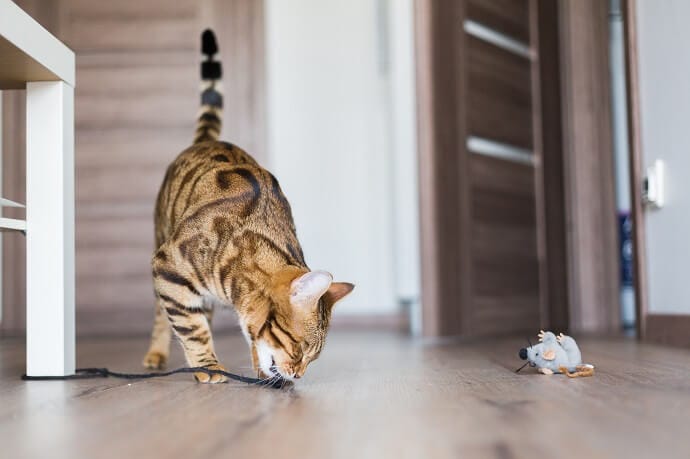
But, if your cat is chewing and swallowing the non-food item, then you may have a pica cat and you’ll need to intervene. Be warned, though, cats can chew and swallow very fast, so you’ll need to pay close attention in order not to miss it.
There are a range of symptoms to look out for which may indicate cat’s pica — especially helpful if you’re not able to catch your kitty in the act of eating strange things.
Look out for vomiting, diarrhea, constipation, low energy, and loss of appetite. These could indicate that your cat may have swallowed something that is disagreeing with them or causing a potentially life-threatening obstruction.
Feline pica is more often seen in kittens but can develop in older cats as well. Pica that starts up later in a cat’s life is usually a result of an underlying illness or due to some kind of stress. Therefore, we strongly recommend consulting with a veterinarian in a vet clinic or via Online Vet and monitoring your pet's behavior to stay on top of things.
What causes pica in cats?
Pica is a perplexing condition that can be linked to a number of potential causes. With no one definitive cause, it can be a tricky one to diagnose and treat. If you see signs that your cat may have pica, it’s best to speak to your vet sooner rather than later.
- Dietary needs
A predominant reason for cats with pica to suddenly consume strange things is that they are attempting to self-correct a nutritional deficiency. This could cause them to begin eating their litter to self-treat anemia, or soil to supplement minerals.
It’s quite normal for a cat to nibble on grass occasionally, but cats with pica will show a sudden sharp increase in their desire to consume lots of plant material.
This behavior can be dangerous as some plants are poisonous to cats. It’s also not recommended for your cat to eat plants or grass that may have been treated with fertilizers and herbicides as these can be toxic.
Any number of vitamin and mineral deficiencies can cause strange eating behavior in cats. In such cases, addressing the deficiency and adjusting your cat’s diet should eliminate the need for your cat to eat non-food items.
- Illness
More serious health conditions can also increase your cat’s need to suddenly begin eating strange items.
There are a few underlying medical causes of pica in cats. Illnesses such as FIV (feline immunodeficiency virus) and leukemia are common causes of pica in cats, as are diabetes and cancer.
- Lack of physical and mental stimulation
Boredom in cats can cause a range of troubling behaviors and issues, cat pica being one.
Make sure you’re providing enough stimulation and physical exertion for your cat, especially if your cat’s breed is known for being curious or energetic. Indoor cats are prone to boredom and this can result in them snacking on inappropriate objects.
Our busy lifestyles can often cause us to not spend enough time playing with our pets, which is why it’s important to try and dedicate some time each day to a rigorous play session with your feline.
- Psychological factors
Some cats possess a more nervous disposition than others. This could be a residual symptom of past trauma or as a response to a sudden change in their life. Anxious and stressed cats may be more prone to pica-like behaviors as a way to self-soothe.
It’s important to identify what is causing your pet such anxiety. It could be separation anxiety when you leave for work in the morning, or perhaps it is a stress response to a specific loud sound, like a lawnmower or thunder.
Cats with pica are often reacting to the introduction of a new animal in the home – this is one of the most common stressors leading to cat pica. Cats are extremely territorial, and the introduction of a new pet is a threatening experience for them, as is moving to a new house.
- Genes
Oriental cat breeds such as Burmese and Siamese are more prone to pica than other cat breeds, indicating a potential genetic component to the disorder. These cats usually display compulsive wool sucking as kittens, which can develop into full-blown pica as the cats mature.
Other cat breeds have displayed wool sucking in young kittens that have been weaned from their mother prematurely. Commonly, the cats grow out of this behavior, but for some, it persists and develops into a form of pica which is particularly resistant to treatment.
How to treat pica in cats?
Your first step in treating pica in cats is to talk with a veterinarian. You will first need to find out what’s causing your cat’s pica so you can treat any underlying issues where possible.
Then you’ll need to work on a plan to discourage your cat from eating non-nutritional items. Here are some suggestions:
-
Of course, the simplest way to discourage your cat from eating non-edibles is to remove them from your cat’s world entirely if possible. Hide any clothes, plants, or other items that your cat finds irresistible.
-
If you’re unable to remove the item your cat can’t enough of, then try making the items less appealing. Strong smells and unappetizing flavors will go a long way to keeping your cat away from nibbling on things they should not be eating. Most pet shops stock pet repellant options that are safe for animals.
-
Give your cat something appropriate to chew on. Grow a patch of safe plants and catnip for kitty to nosh on or replace dangerous items with safe, cat-friendly toys. Remember to reward your cat with cuddles and treats to reinforce the desired behavior.
-
If boredom is the source of the pica, then it’s time to up your game in the game space. Invest in some new interactive toys, dedicate more time in your day to playing with your cat, and maybe even purchase a harness to take them out on walks.
Walking your cat is both physically and mentally stimulating and is a good way to cure boredom. Remember to pay attention to your cat’s body language – some cats may find a walk too stressful and overwhelming.
There are also various apps that you can download to your phone or tablet to help entertain your feline.
Cats love to explore, not just horizontally, but vertically as well. Climbing spaces, cat trees, and high shelving can provide a whole new perspective on the world for your cat and will keep them entertained.
Distract your cat with fun activities, stimulation, and reward them well to reinforce the positive behavior.
- Work with professionals to help your cat. Veterinarians can address any underlying medical issues that your cat may have, but for behavioral issues, it might help to reach out to an animal behaviorist who can work closely with your vet to understand your cat’s needs and share insight into why your cats may be eating everything that they shouldn’t.
Cat pica treatment is a marathon, not a sprint. It will take time and patience, and sometimes it might take a few different approaches before you hit on something that works. But the health and happiness of your little furry baby are entirely worth it.
If you have a suspicion that your floof may have pica, don’t delay seeking treatment. While it might seem like just a sweet and innocent quirk, cat pica can lead to serious complications and is best caught early.
Was this article helpful?
Help us make our articles even better

